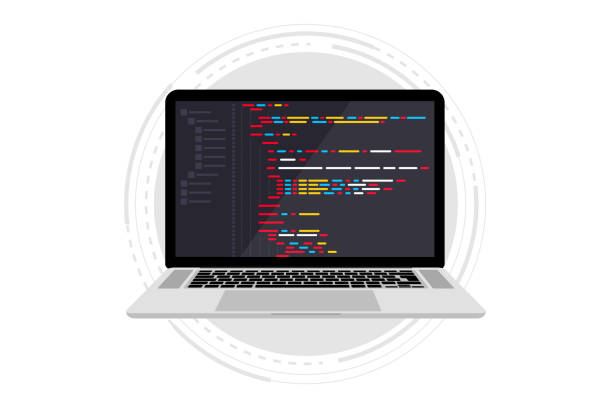
Keeping up with the ever-evolving landscape of coding standards, tools and technologies can be daunting for a web developer. In this comprehensive guide, we'll provide you with an overview of the front-end development guidelines and best practices to ensure your website meets modern standards and remains secure.
Keep reading to discover how you can become a better web developer and create websites that are optimized for performance and user experience.
Introduction to Front-End Development
![]()
Front-end development is responsible for how a website looks and feels. It includes everything from the structure of the HTML code that makes up a webpage to the styling of CSS elements, to the interactive behavior of JavaScript.
Good front-end development practices are essential for building websites that are easy to use, load quickly, and look great on all devices.
In this guide, we'll cover everything you need to know about front-end development guidelines and best practices. We'll start with an overview of the different types of front-end development, then move on to discussing HTML code structure, CSS stylesheets, and JavaScript programming.
By the end of this guide, you'll have a solid understanding of how to create websites that follow all the best practices for front-end development.
What are Front-End Development Guidelines & Best Practices?

When it comes to front-end development, there are a few key guidelines and best practices that every developer should follow in order to create high-quality, standards-compliant code.
One of the most important things to keep in mind is to always write code that is clean, well-organized, and easy to read. This will make it much easier for other developers (or yourself, if you need to come back to the code at a later date) to understand and work with.
It's also important to make use of comments throughout your code. Comments can help explain what a particular block of code is doing or be used as a reminder for yourself or others about something that needs to be changed.
In addition to writing clean and well-commented code, it's also important to follow coding standards and conventions. This will again make your code more readable and consistent, which is always a good thing. There are many different coding standards out there (such as the popular PSR standards for PHP), so choose one that makes sense for your project and stick with it.
Finally, when working on front-end code, it's important to keep performance in mind. Always try to minimize the amount of code you're using, as well as optimize any assets such as images or CSS files. By keeping these things in mind, you can help ensure that your front-end code is fast, efficient, and up to standards.
HTML/CSS Coding Guidelines

In any software development project, coding guidelines are important to maintain consistency and quality in the codebase. For web development, there are many different technologies and frameworks to choose from. In this article, we will focus on HTML and CSS coding guidelines.
When coding in HTML, it is important to use semantic markup. This means using tags that accurately describe the content they contain. For example, using a tag for a heading rather than just making the text bold and large. Semantic markup makes your code more readable and maintainable.
It is also important to keep your HTML well-structured. Indent nested elements to improve readability. Use comments to explain sections of code or specific decisions you made. And use consistent naming conventions for classes and IDs.
When it comes to CSS, there are a few key things to keep in mind. First, try to keep your CSS selectors as specific as possible. This will make your code more efficient and easier to maintain. Second, use a preprocessor such as Less or Sass to write your CSS. This will allow you to use features such as variables and mixins, which can make your code more DRY (Don't Repeat Yourself). Finally, make sure your CSS is well-organized by grouping related styles together and using comments liberally.
Following these HTML/CSS coding guidelines will help you create clean, readable, and maintainable code.
JavaScript Coding Guidelines

JavaScript is a versatile scripting language that can be used to add interactive features to web pages. However, with great power comes great responsibility. To keep your code clean, consistent, and easy to maintain, it is important to follow some basic coding guidelines.
Here are some general JavaScript coding guidelines to follow:
- Use meaningful variable and function names: Choose names that describe what the variable or function is used for. This will make your code easier to read and understand.
- Add comments: Use comments to explain what your code does. This will again make it easier for others (and yourself!) to understand what is going on.
- Stick to a consistent coding style: Decide on a coding style and stick to it. This will make your code more readable and maintainable. There are many different JavaScript coding styles out there, so choose one that you like and stick to it.
- Use a linter: A linter is a tool that helps you find and fix errors in your code. It can also enforce adherence to coding conventions such as the ones mentioned above. Using a linter will help you write cleaner, more error-free code.
Responsive Design and Cross-Browser Testing
![]()
Responsive design is a necessary evil in today’s multi-device world. It’s the process of making your website look great on all devices, from smartphones to laptops and everything in between.
Cross-browser testing is the process of making sure your website looks and functions correctly in all browsers. This includes popular browsers like Google Chrome, Mozilla Firefox, Microsoft Edge, and more.
Both responsive design and cross-browser testing are essential for any website or web application. If you don’t have a responsive design, your site will look terrible on mobile devices. And if you don’t cross-browser test, your site may not work correctly in certain browsers.
In this article, we’ll give you an overview of both responsive design and cross-browser testing. We’ll also provide some tips on how to get started with each one.
What Is Responsive Design?
Responsive design is the process of making your website look great on all devices, from smartphones to laptops and everything in between. A responsive website automatically adjusts its layout and content to fit any screen size. This ensures that your site looks its best no matter what device it’s being viewed on.
responsive design is important because more people are using mobile devices to access the internet than ever before. In fact, over 60% of internet traffic now comes from mobile devices.
Debugging and Performance Optimization
![]()
Assuming that you have a basic understanding of front-end development and are familiar with the standard tools used in the industry, this guide will provide you with an overview of some of the best practices followed by experienced developers. It will also help you debug and optimize your code for better performance.
When it comes to debugging, always start by checking your code for any syntax errors. Once you have corrected all the errors, run your code through a linter tool like JSLint or ESLint to check for any potential issues. If there are no errors, then the next step is to identify the root cause of the problem. This can be done by using a debugger tool like Firebug or Chrome Developer Tools.
Once you have identified the root cause of the problem, try to fix it and then re-run your code to see if the problem has been resolved. If not, then go back to the debugging process and repeat it until the problem is fixed.
Performance optimization is important for two main reasons: first, it helps reduce page load times; second, it helps improve user experience by making your web pages more responsive. There are many factors that can affect performance, but some of the most common include using inefficient code, excessive use of JavaScript libraries, and large image files.
To optimize your code for better performance, start by minifying your CSS and JavaScript files. This will reduce their size and make them easier to download. Next, focus on reducing HTTP requests
Accessibility Standards

There are a number of accessibility standards that should be adhered to when developing a front-end website or application. These standards ensure that your site or app can be used by people with disabilities, and help to make the web a more inclusive place for everyone.
The most important accessibility standard is the Web Content Accessibility Guidelines (WCAG), which outlines a set of guidelines for making web content accessible to everyone. WCAG is developed by the World Wide Web Consortium (W3C), and has been adopted by many countries and organizations as the standard for web accessibility.
Adhering to WCAG is essential for making your site or app accessible to people with disabilities, but it’s also important to keep in mind the other accessibility standards that exist. These include the US Section 508 standards, and the UK’s Equality Act 2010.
complying with all of these standards can seem like a daunting task, but there are a number of resources available to help you. The W3C has a helpful checklist of all the WCAG guidelines, as well as resources on how to implement them. There are also many tools available that can help you test your site or app for accessibility compliance.
Testing and Version Control

When it comes to front-end development, testing and version control are two of the most important aspects to consider. Testing ensures that your code is error-free and works as intended, while version control allows you to keep track of changes and revert back to previous versions if needed.
There are a few different ways to test your code, including manually testing it yourself, using a tool like JSHint or JSLint, or running unit tests with a framework like Jasmine. Whichever method you choose, make sure to test your code thoroughly before deploying it.
As for version control, Git is the most popular choice among developers. It's free and open source, and there are plenty of resources available to help you get started. Once you have Git set up, be sure to create a new branch for each new feature or fix you work on. This will help keep your code organized and allow you to easily revert back to previous versions if needed.
Automation Tools

The front-end development landscape is vast and ever-changing. That's why it's important to have a solid understanding of the different automation tools available to help streamline your workflow. In this section, we'll discuss some of the most popular automation tools used by front-end developers.
Task runners like Gulp and Grunt are used to automate common development tasks like code minification, linting, and compilation. These tools can save you a lot of time and effort during the development process.
Package managers like NPM and Bower can help you easily install, update, and manage your project dependencies. This can be a huge time-saver, especially when working on large projects with many dependencies.
Preprocessors like Sass and Less can help you write more maintainable and scalable CSS code. These tools provide features like variables, mixins, and nesting that are not available in vanilla CSS.
Linters like JSHint and ESLint can help you find errors and potential problems in your JavaScript code. These tools can save you a lot of time debugging your code during development.
Compilers like Babel and TypeScript can help you write next-generation JavaScript code that is compatible with older browsers. These tools allow you to use features from the latest versions of JavaScript, even if those features are not yet supported by all browsers.
Conclusion
Front-end development is an important aspect of web design and development, and by following the best practices outlined in this guide you can ensure that your website looks great across all devices.
With proper planning, a comprehensive set of guidelines, and the right team of front-end developers, you can create dynamic websites with engaging user experiences. So if you’re looking to get started on building a professional website or app for your business, keep these tips in mind!

































